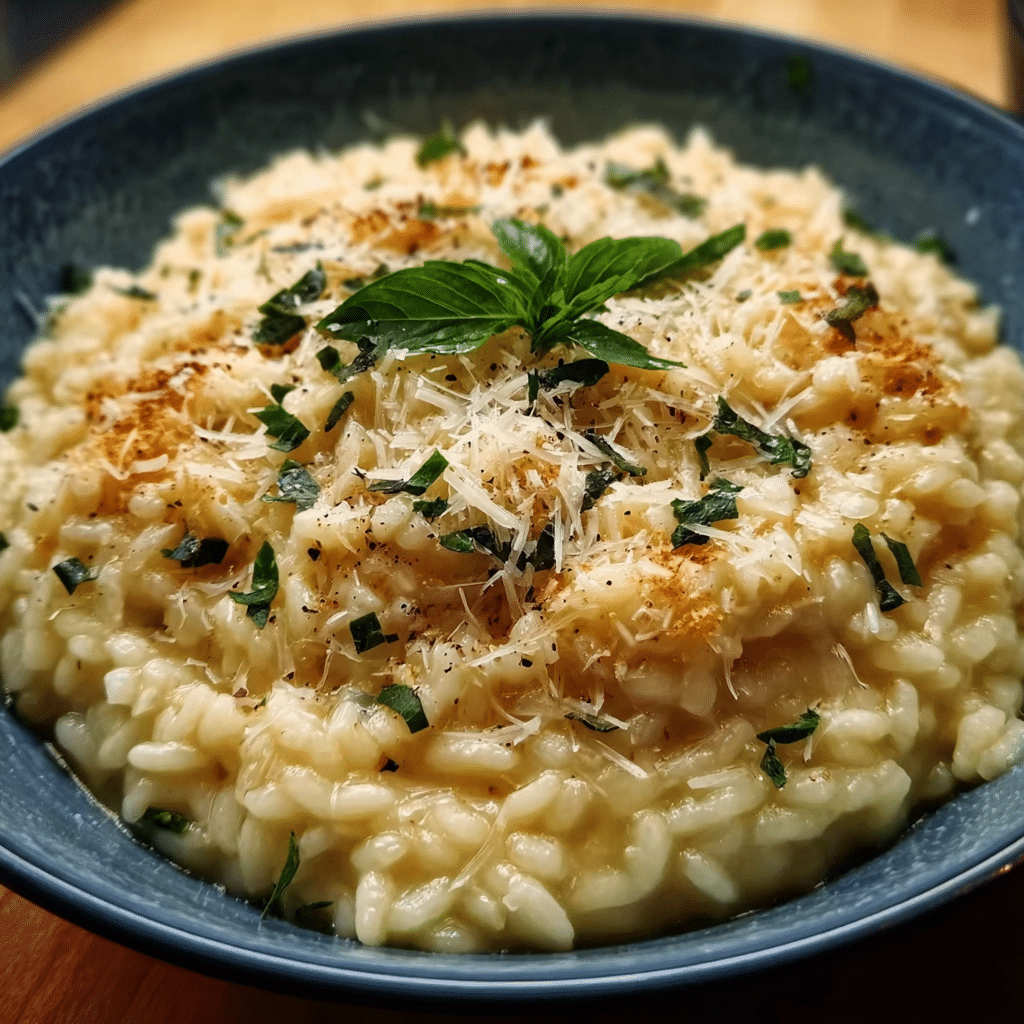Roasted sweet potato has become a beloved staple in my kitchen, a dish that not only satisfies the palate but also nourishes the soul. I can still remember the first time I tried roasted sweet potatoes at a local farmer’s market. The aroma of caramelized sweetness wafted through the air, drawing me in like a moth to a flame. I could hardly contain my excitement as I watched the vendor preparing them, tossing the vibrant orange chunks in a sprinkle of olive oil and a dash of salt before sliding them into the oven. The moment I took my first bite, I felt a wave of warmth and comfort wash over me—this simple yet elegant dish had transformed into a sensory experience that I had to replicate at home.
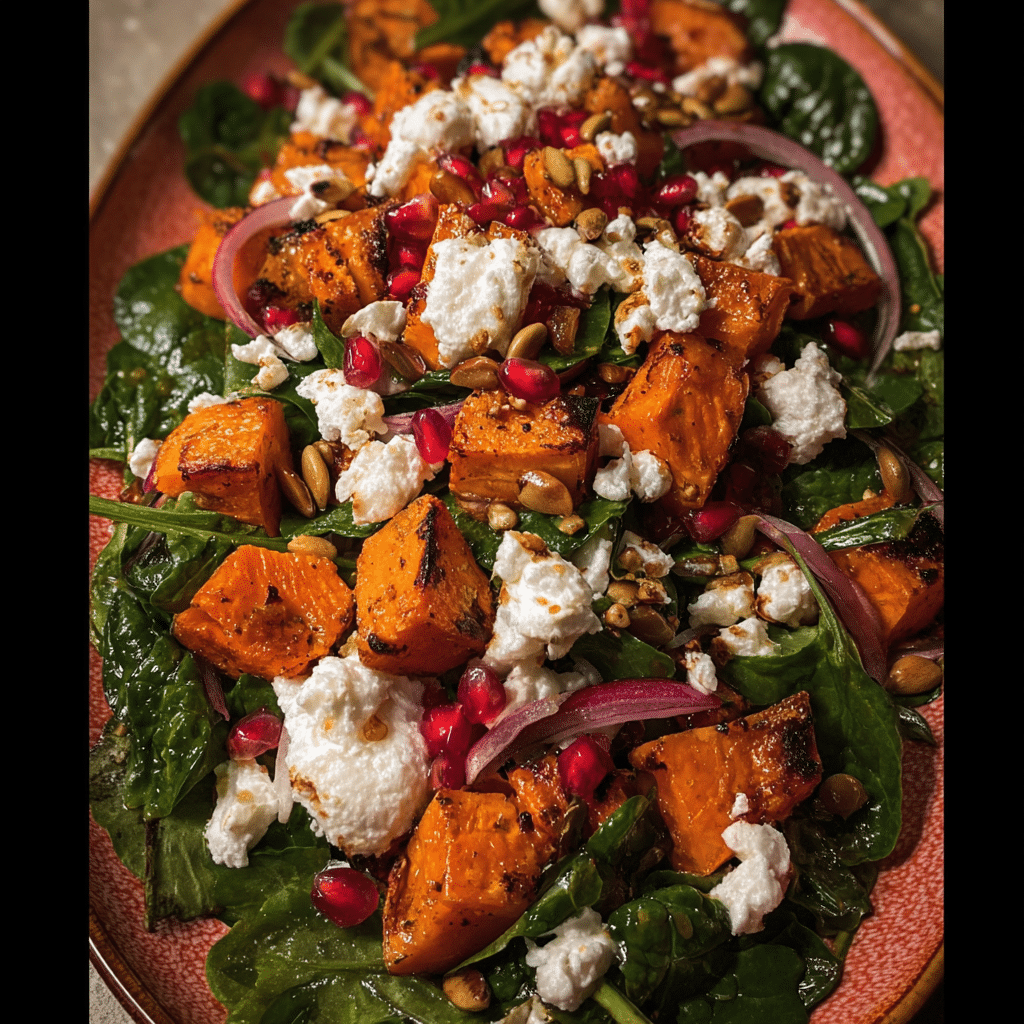
As I began experimenting in my own kitchen, I discovered the beauty of pairing roasted sweet potato with creamy goat cheese—a match made in culinary heaven. This combination not only elevates the flavor but also adds a delightful textural contrast that makes each bite a celebration of taste. As I honed my recipe, I realized that this dish could be a perfect solution for busy families looking for quick dinner options without sacrificing nutrition or flavor. The roasted sweet potato is versatile, allowing for a myriad of additions, from crunchy nuts to vibrant greens, making it easy to customize according to what’s available in the fridge.
The Story Behind This Recipe
The cultural background of roasted sweet potato is as rich as its flavor. Sweet potatoes, native to Central and South America, have been cultivated for thousands of years. Indigenous peoples revered them not only for their delicious taste but also for their nutritional value. Today, they are enjoyed across the globe, with various cultures putting their own spin on how to prepare them. My experience with roasted sweet potatoes comes from a blend of these influences, incorporating elements of traditional Southern cooking and Mediterranean flair.
What truly sets this salad apart from others is the way it marries the earthy sweetness of the roasted sweet potato with the tangy notes of goat cheese. This dish has a depth of flavor that is both comforting and exciting, making it a go-to recipe for gatherings or simple weeknight dinners. The roasted sweet potato brings its natural sweetness, while the goat cheese adds a creamy, tangy layer, creating a perfect harmony that is not only pleasing to the taste buds but also visually stunning.
Seasonally, roasted sweet potato shines during the fall and winter months when the weather cools and comfort food becomes a priority. However, thanks to their year-round availability, you can enjoy this dish anytime! The vibrant colors of the roasted sweet potato and the salad’s fresh greens create a feast for the eyes, reminding us that we can enjoy seasonal produce while maintaining a healthy diet.
Emotionally, this dish resonates with me on multiple levels. It reminds me of family gatherings, where the warmth of the oven and the laughter around the table create an atmosphere of love and connection. Each time I prepare this salad, I find myself reminiscing about those cherished moments, making it not just a meal but a celebration of togetherness.
In this guide, you will learn everything you need to know about making the perfect roasted sweet potato goat cheese salad. From tips on achieving the ideal texture and flavor to suggestions for customization, I promise you’ll be equipped to create a dish that impresses your family and friends. Whether you’re a seasoned cook or a beginner in the kitchen, this recipe is accessible and rewarding. Get ready to dive into the world of roasted sweet potatoes, and let’s make some culinary magic together!
The Rich History and Cultural Significance of roasted sweet potato
Origins and History
The origins of roasted sweet potato can be traced back to ancient civilizations. Sweet potatoes were cultivated by the indigenous peoples of South America over 5,000 years ago, primarily in the regions that are now Peru and Ecuador. Their cultivation spread through the Americas and eventually made its way to Europe via the Spanish and Portuguese explorers in the 16th century. Today, sweet potatoes are grown in many parts of the world, with the United States being one of the largest producers. The sweet potato has become a cultural icon in various cuisines, celebrated for both its versatility and nutritional benefits.
As cooking methods evolved, so did the ways in which sweet potatoes were prepared. In many cultures, they are boiled, mashed, or fried, but roasting them has gained popularity for its ability to enhance their natural sweetness. Roasting caramelizes the sugars in the sweet potatoes, creating a rich, deep flavor that is simply irresistible. My personal favorite method of preparation is to roast them until they are caramelized on the outside while remaining tender and fluffy on the inside—a technique that has been perfected over generations.
Cultural Significance
Roasted sweet potatoes hold a special place in various culinary traditions around the world. In the Southern United States, sweet potatoes are often featured on holiday tables, especially during Thanksgiving. They are frequently mashed, baked into casseroles, or served as a roasted side dish. This tradition reflects not only the agricultural richness of the region but also the cultural practices of celebrating harvests and the importance of family gatherings.
In many Latin American countries, sweet potatoes are integral to traditional dishes. For instance, in Peru, they are often served as a side to grilled meats or incorporated into stews. The Andean culture has a long history of utilizing sweet potatoes as a staple food, emphasizing their importance in daily diets. Similarly, in Asian cuisines, sweet potatoes are used in desserts, soups, and even as a filling for dumplings, showcasing their versatility across cultures.
Nutritional Benefits
Beyond their delicious taste and cultural significance, roasted sweet potatoes are packed with nutritional benefits that make them a smart choice for any meal. They are an excellent source of vitamins A and C, which are crucial for maintaining healthy skin and immune function. The vibrant orange color of sweet potatoes comes from beta-carotene, a powerful antioxidant that the body converts into vitamin A. Additionally, sweet potatoes are rich in fiber, which aids in digestion and promotes a healthy gut.
Moreover, roasted sweet potatoes are low in calories yet filling, making them an ideal choice for those looking to maintain a balanced diet. They are also gluten-free and can easily be incorporated into various dietary preferences, including vegetarian and vegan diets. The combination of roasted sweet potatoes with goat cheese in a salad adds an extra layer of protein and healthy fats, creating a well-rounded meal that is as nutritious as it is delicious.
In conclusion, the roasted sweet potato is more than just a dish; it is a celebration of history, culture, and health. As we explore this delightful ingredient, we not only pay homage to its origins but also embrace its versatility and nutritional benefits. So, whether you are preparing it for a holiday feast or a simple weeknight dinner, roasted sweet potatoes will always hold a special place in our hearts and on our plates.
Essential Ingredients for Perfect roasted sweet potato
When it comes to crafting a delicious Roasted Sweet Potato Goat Cheese Salad, the foundation lies in the quality and selection of your ingredients. Each component plays a crucial role in not only enhancing the flavors but also in providing texture and nutritional value. Below, we will explore the essential ingredients you will need, their significance, and tips for selecting the best options.
Essential Ingredients
- Sweet Potatoes (2 medium-sized): The star of the dish, sweet potatoes provide a natural sweetness and a creamy texture when roasted. Look for firm, unblemished potatoes with a vibrant orange hue.
- Goat Cheese (4 ounces): Creamy and tangy, goat cheese adds a rich flavor profile that beautifully contrasts the sweetness of the roasted sweet potatoes. Choose a fresh log or crumbled variety for ease of use.
- Mixed Greens (4 cups): A blend of arugula, spinach, and kale not only adds a fresh, crisp base but also complements the richness of the other ingredients. Opt for organic greens when possible to avoid pesticides.
- Red Onion (1 small): Sharp and slightly sweet when roasted, red onion adds depth to the salad. Select a firm onion with a vibrant color.
- Olive Oil (3 tablespoons): Used for roasting the sweet potatoes and dressing the salad, high-quality extra virgin olive oil enhances flavors and provides healthy fats.
- Maple Syrup (1 tablespoon): A drizzle of maple syrup intensifies the sweetness of the roasted sweet potatoes and adds a lovely glaze. Choose pure maple syrup for the best flavor.
- Balsamic Vinegar (2 tablespoons): This adds acidity to balance the richness of the goat cheese and olive oil. Aged balsamic vinegar will offer a more complex flavor.
- Salt and Pepper (to taste): Basic seasonings that elevate the flavors of each ingredient. Use sea salt and freshly cracked black pepper for the best results.
- Chopped Nuts (1/4 cup): Optional, but highly recommended! Walnuts or pecans add a delightful crunch and richness. Choose unsalted varieties to control the seasoning.
Each ingredient has a significant role in the overall harmony of the salad. Sweet potatoes are not only delicious but also packed with nutrients like vitamins A and C, fiber, and antioxidants. Goat cheese brings a creamy texture and a tang that cuts through the sweetness. Mixed greens provide essential vitamins and minerals while adding a fresh crunch. The red onion contributes a sharpness that balances the dish, and the olive oil serves as a healthy fat, enhancing absorption of the fat-soluble vitamins present in the salad.
Print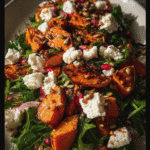
Roasted Sweet Potato Goat Cheese Salad
Ingredients
- Chopping Board
- Sharp knife
- Measuring Cups and Spoons
- Whisk
- Large baking tray or baking dish
- small baking tray
- Serving platter
- large bowl or salad bowl
- small bowl
Instructions
- 750 grams sweet potato, peeled and cubed
- 1 teaspoon garlic powder
- 1 teaspoon sea salt flakes
- 2 tablespoons extra virgin olive oil
- Cracked black pepper , to taste
- 120 grams Baby arugula, or other green leafy vegetables like baby spinach or baby kale
- 1/3 cup pine nuts
- ¼ cup pomegranate arils
- 120 grams soft goat cheese, goat’s chèvre
- ¼ cup red onion, very thinly sliced
Balsamic Vinaigrette
-
- 60 mL extra virgin olive oil
- 40 mL balsamic vinegar, aged
- 3 tablespoons wholegrain mustard
- 2 teaspoons honey
Shopping Tips
When shopping for your ingredients, consider seasonal availability. Sweet potatoes are typically harvested in the fall and are available year-round, but they are at their sweetest in late summer and fall. For the freshest greens, visit your local farmers’ market during the growing season, typically late spring through early fall, when greens are in abundance.
Quality indicators are essential when selecting sweet potatoes; look for those that are heavy for their size and free of blemishes. Organic sweet potatoes may have a richer flavor and better texture due to their growth conditions. When it comes to goat cheese, freshness is key. If possible, buy from a local cheesemonger or farmer’s market where you can inquire about the cheese’s production date.
To save costs, consider buying in bulk or at discount grocery stores. Sweet potatoes, for example, can often be found at lower prices in larger quantities. Additionally, if you’re watching your budget, you can substitute goat cheese with feta or even a vegan cream cheese alternative for a similar creamy texture without breaking the bank.
Substitutions and Alternatives
If you have dietary restrictions or preferences, there are plenty of substitutions available. For instance, if you’re avoiding dairy, you can replace goat cheese with a dairy-free feta or nut-based cheese. For a nut-free option, skip the nuts altogether or use seeds like pumpkin or sunflower seeds for added crunch.
If you are looking to reduce carbohydrates, consider swapping out the sweet potatoes for roasted butternut squash, which offers a similar sweetness and texture. Additionally, if you prefer a lower-calorie dressing, you can replace olive oil with a light vinaigrette made with lemon juice and a splash of balsamic vinegar.
In terms of storage, sweet potatoes can be kept in a cool, dark place for several weeks, while cut greens should be stored in a damp paper towel in a sealed container in the refrigerator, where they can last about a week. Goat cheese should be kept in the fridge and consumed within a week after opening for optimal freshness.
By understanding each ingredient’s role and how to select the best options, you ensure that your Roasted Sweet Potato Goat Cheese Salad will not only taste amazing but will also be visually appealing and packed with nutrition.
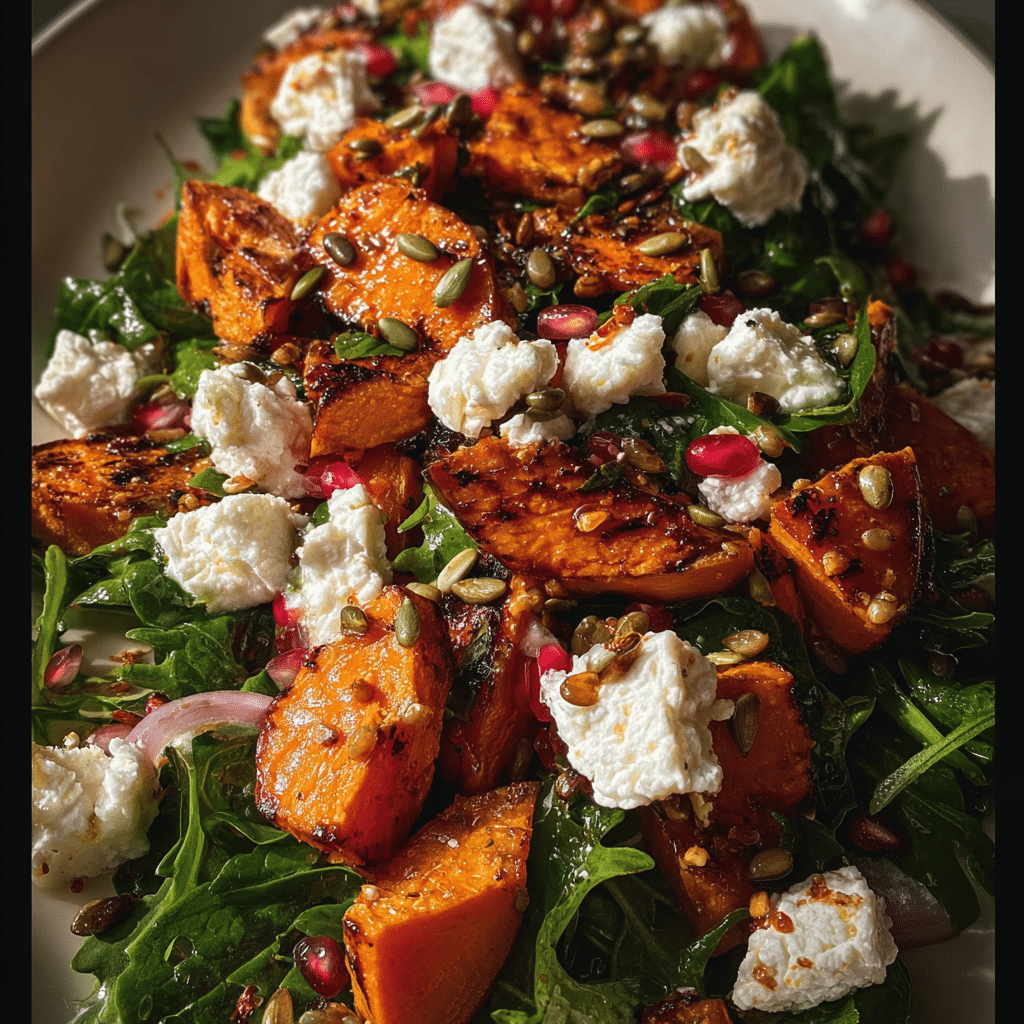
Detailed Step-by-Step roasted sweet potato Cooking Instructions
Now that we have gathered our essential ingredients for the Roasted Sweet Potato Goat Cheese Salad, it’s time to dive into the cooking process. This step-by-step guide will ensure that you not only achieve a deliciously balanced dish but also enjoy the cooking experience itself. Let’s break down the preparation and cooking process, highlighting some professional techniques and tips you might find helpful.
Preparation Steps
- Preheat Your Oven: Begin by preheating your oven to 425°F (220°C). A hot oven is crucial for achieving that perfect caramelization on your sweet potatoes, which enhances their natural sweetness.
- Prepare the Sweet Potatoes: Wash and peel the sweet potatoes, then cut them into 1-inch cubes. Uniformity in size will ensure even cooking. As you chop, think about the colors and shapes—sweet potatoes are vibrant and fun to work with!
- Toss with Olive Oil and Season: In a large mixing bowl, combine the cubed sweet potatoes with 2 tablespoons of olive oil, salt, and pepper to taste. If you like a hint of sweetness, feel free to add a tablespoon of maple syrup at this stage. Toss everything well until the sweet potatoes are evenly coated.
- Prepare the Baking Sheet: Line a baking sheet with parchment paper for easy cleanup and to prevent sticking. Spread the sweet potatoes in a single layer on the sheet, ensuring they are not overcrowded, which can lead to steaming instead of roasting.
- Roast the Sweet Potatoes: Place the baking sheet in the preheated oven and roast for 25 to 30 minutes, or until the sweet potatoes are golden brown and tender. Halfway through, give them a good toss to ensure they cook evenly. You’ll know they’re done when they’re fork-tender and caramelized on the edges, releasing a sweet aroma that fills your kitchen.
Cooking Process
- Prep the Greens and Other Ingredients: While the sweet potatoes are roasting, take this time to prepare the mixed greens and other salad components. Rinse the greens under cold water, then dry them in a salad spinner or by patting them down with a clean kitchen towel. This step is essential to avoid a soggy salad!
- Slice the Red Onion: Peel and thinly slice the red onion. The sharpness of the onion will mellow once it’s combined with the sweet potatoes and greens, providing a lovely contrast in flavor.
- Toast the Nuts (Optional): If you’re using nuts, consider toasting them in a dry skillet over medium heat for about 5 minutes, stirring frequently. This will enhance their flavor and crunch. Be careful not to burn them—your nose will guide you when they are ready!
- Prepare the Dressing: In a small bowl, whisk together the remaining tablespoon of olive oil, balsamic vinegar, and maple syrup. Adjust the seasoning with salt and pepper. A well-balanced dressing ties the whole salad together, so make sure it tastes delicious!
Final Assembly
- Combine the Ingredients: Once the sweet potatoes are roasted and slightly cool, it’s time to assemble your salad. In a large bowl, add the mixed greens, roasted sweet potatoes, sliced red onion, and crumbled goat cheese. If you toasted nuts, sprinkle them on top now.
- Dress the Salad: Drizzle the prepared dressing over the salad. Start with a little and add more according to your taste preference. Gently toss the salad with your hands or a large serving spoon, ensuring everything is coated in that delightful dressing.
- Serve and Enjoy: Transfer the salad to a serving platter or individual bowls for a beautiful presentation. This Roasted Sweet Potato Goat Cheese Salad is perfect as a side dish or even as a main course if you’re craving something light yet satisfying.
- Storage Tips: If you have leftovers, store your salad components separately to maintain freshness. The roasted sweet potatoes can be kept in the fridge for about 4-5 days, while the greens should be consumed within a few days for optimal crispness.
Cooking this Roasted Sweet Potato Goat Cheese Salad is not just about following a recipe; it’s about enjoying the process and bringing together flavors that complement each other beautifully. Whether you’re preparing it for a casual lunch or a festive gathering, this salad is sure to delight your palate and impress your guests!
Professional Tips and Techniques for roasted sweet potato
When it comes to creating the perfect roasted sweet potato, there are a few professional tips and techniques that can elevate your dish from ordinary to extraordinary. Roasted sweet potatoes are not just versatile and delicious; they also offer a range of health benefits, making them a fantastic addition to any diet. As someone who has spent countless hours in the kitchen experimenting with this vibrant vegetable, I’m excited to share some insider secrets that will help you achieve the best possible results.
Professional Techniques
To start with, the key to achieving perfectly roasted sweet potatoes lies in the size and shape of your cuts. Uniform pieces ensure even cooking, so aim for cubes that are about 1-inch in size. This not only helps them cook evenly but also makes for a beautiful presentation. When it comes to seasoning, don’t be shy! A drizzle of olive oil, along with sea salt and freshly cracked black pepper, is a classic combination. However, you can take it a step further by adding garlic powder, smoked paprika, or even a hint of cinnamon for a sweet and savory twist.
Another technique I’ve found useful is parboiling your sweet potatoes before roasting. This might sound counterintuitive, but by boiling them for just a few minutes, you can reduce the overall roasting time and achieve a tender interior while still getting that crispy exterior we all crave. After parboiling, drain them well and let them cool slightly before tossing them in your seasonings and roasting at a high temperature—around 425°F (220°C)—for maximum caramelization.
Troubleshooting Guide
Even the most seasoned cooks face challenges from time to time. If your roasted sweet potatoes come out mushy instead of crispy, it may be due to overcrowding on the baking sheet. Ensure there’s enough space between the pieces; otherwise, they’ll steam instead of roast. If you find they are not browning as expected, try increasing the oven temperature or broiling them for the last few minutes of cooking. This can give them that beautiful golden color that is so appealing.
Another common issue is uneven cooking. This can often be remedied by rotating the baking sheet halfway through the cooking process. Sweet potatoes can vary significantly in their moisture content, which can affect cooking times. Monitoring them closely and testing with a fork for doneness will help you achieve the perfect texture.
Presentation Tips
Once you’ve perfected your roasted sweet potatoes, it’s time to think about presentation. The vibrant orange hue of roasted sweet potatoes naturally draws the eye, making them an excellent centerpiece for any salad or side dish. Consider serving them in a large, shallow bowl, garnished with fresh herbs like parsley or cilantro for a pop of color. A sprinkle of feta cheese or goat cheese can add a creamy contrast that enhances both flavor and visual appeal.
Another presentation technique is to layer your roasted sweet potatoes with other ingredients like greens, nuts, and a zesty dressing. This not only adds depth to the dish but also allows the roasted sweet potatoes to shine as the star ingredient. Pairing them with a bright, acidic dressing can balance the sweetness of the potatoes, making for an enticing plate.
Wine and Beverage Pairings
When it comes to pairing beverages with roasted sweet potatoes, consider the flavors you’ve incorporated into your dish. If you’ve used warm spices like cumin or cinnamon, a light-bodied red wine such as Pinot Noir can complement those flavors beautifully. For a white wine option, a fruity Sauvignon Blanc works well, as its acidity can cut through the sweetness of the potatoes. If you’re looking for a non-alcoholic option, a sparkling apple cider can provide a refreshing contrast and enhance the overall dining experience.
Lastly, make-ahead strategies are vital for those busy weeknights. Roasted sweet potatoes can be prepared in advance and stored in the refrigerator for up to four days. Simply reheat them in the oven to restore their crispy texture before serving. This not only saves time but also allows the flavors to meld beautifully, making your roasted sweet potato dish even more delicious. By incorporating these professional tips and techniques into your cooking, you’ll be well on your way to mastering the art of roasted sweet potatoes.
Creative Variations and Adaptations of roasted sweet potato
One of the most exciting aspects of cooking is the ability to experiment and adapt recipes to suit your tastes and the seasons. Roasted sweet potatoes are incredibly versatile, making them the perfect canvas for a variety of creative variations and adaptations. As I’ve delved into the world of roasted sweet potatoes, I’ve discovered numerous ways to incorporate different flavors, textures, and culinary traditions, each adding its unique flair to this beloved dish.
Seasonal Variations
When considering seasonal ingredient swaps, think about what is fresh and available in your area. In the fall, pair your roasted sweet potatoes with Brussels sprouts or kale, tossing them together with olive oil and a pinch of nutmeg for a festive side dish. In the winter months, add hearty root vegetables like carrots or parsnips to the mix, creating a colorful medley that brings warmth on chilly days. During spring and summer, try incorporating fresh herbs and citrus zest to brighten the flavors, serving them alongside grilled asparagus or zucchini for a refreshing, seasonal salad.
Another fun seasonal twist is to add toppings that reflect the season’s flavors. In autumn, consider drizzling your roasted sweet potatoes with a maple syrup glaze and topping them with toasted pecans for a sweet, nutty crunch. In the summer, a sprinkle of crumbled feta cheese and fresh mint can add a delightful Mediterranean flair that pairs beautifully with grilled meats or fish.
Dietary Adaptations
Roasted sweet potatoes can easily be adapted to fit various dietary needs. If you’re following a keto diet, you might want to substitute traditional sweet potatoes with cauliflower. While it won’t have the same sweetness, roasting cauliflower florets with similar spices can yield a delicious, low-carb side dish. For a vegan twist, consider tossing your roasted sweet potatoes with chickpeas and a tahini dressing, creating a hearty and satisfying meal that’s packed with plant-based protein.
For those with gluten sensitivities, rest assured that roasted sweet potatoes are naturally gluten-free. You could transform them into a delightful gluten-free taco filling by mashing or cubing the roasted sweet potatoes and serving them in corn tortillas topped with avocado and salsa for a vibrant, flavorful meal.
Creative Twists
Now, let’s talk about some international fusion variations that can add a unique twist to your dish. For a spicy kick, try adding a sprinkle of chili powder or cayenne pepper to your roasted sweet potatoes. This not only enhances their natural sweetness but also gives them a delightful heat that pairs beautifully with cooling elements like yogurt or avocado.
Another idea is to incorporate Asian flavors by tossing your roasted sweet potatoes with sesame oil, soy sauce, and green onions. This creates a savory side that can be served alongside grilled meats or as part of a Buddha bowl. If you’re feeling adventurous, try combining roasted sweet potatoes with Middle Eastern spices like cumin, coriander, and sumac, then topping them with a yogurt sauce for a deliciously aromatic dish.
As for cooking methods, roasting is just one way to enjoy sweet potatoes. If you’re pressed for time, consider using a slow cooker. Simply cube the sweet potatoes, toss them with your favorite spices, and let the slow cooker do the work for you. Alternatively, you can steam the sweet potatoes for a healthier option, then toss them with olive oil and seasonings to finish them off in the oven for a few minutes to achieve that delightful caramelization.
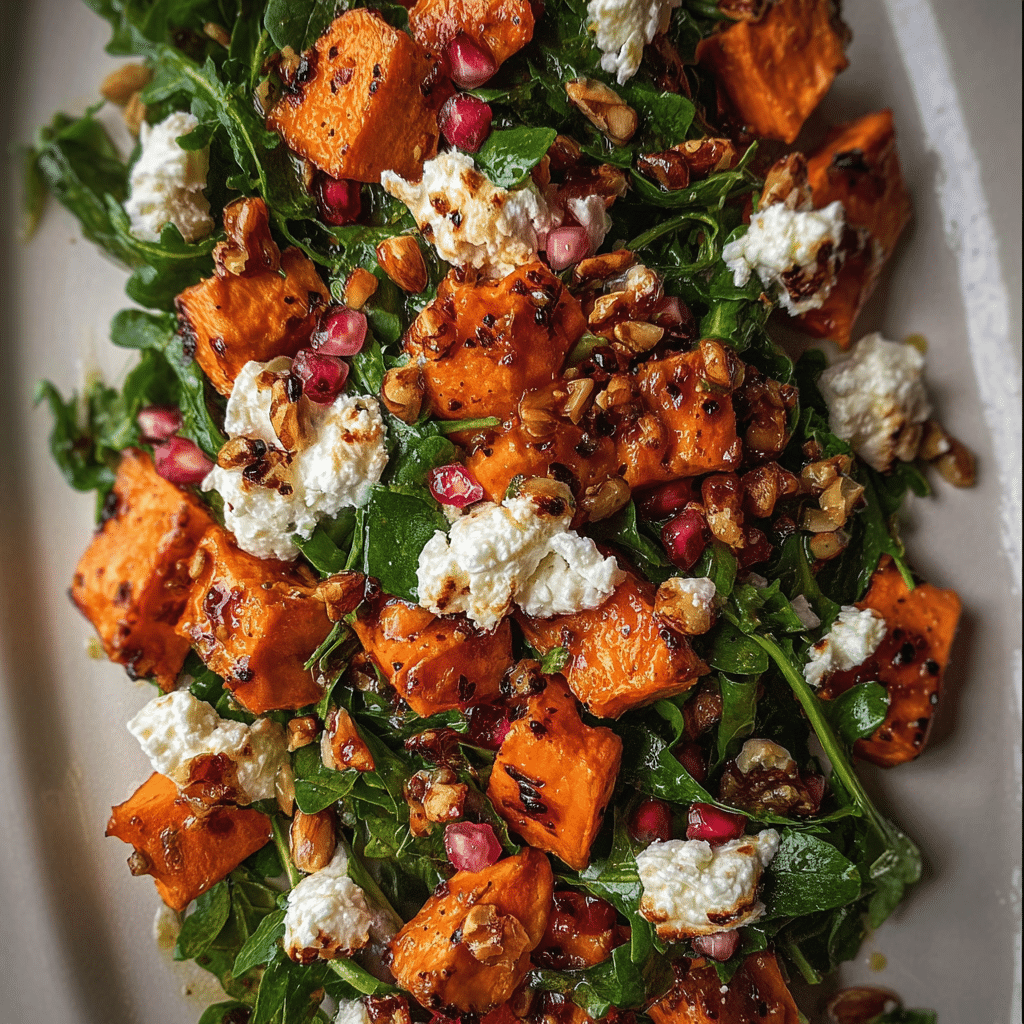
Lastly, let’s not forget about leftovers. Roasted sweet potatoes can be transformed into a myriad of dishes. Consider mashing them and using them as a filling for quesadillas or as a base for a creamy soup. You can also toss leftover roasted sweet potatoes into a breakfast hash with eggs and sautéed vegetables, creating a hearty and satisfying morning meal. The possibilities are truly endless!
Storage, Reheating, and Meal Prep for roasted sweet potato
When it comes to enjoying the deliciousness of roasted sweet potatoes, understanding how to store them properly is essential. Not only does it ensure that you can savor their flavor over a few days, but it also helps reduce waste and maintain their nutritional value. In this guide, we’ll explore various storage techniques for roasted sweet potatoes, along with the best practices for reheating and meal prep. So, grab your favorite sweet potatoes, and let’s dive into the world of storage!
Short-term Storage
After you’ve roasted your sweet potatoes to golden perfection, you might find yourself with some leftovers. If you plan to eat them within a few days, short-term storage in the refrigerator is ideal. Start by allowing the roasted sweet potatoes to cool to room temperature; this step is crucial because placing warm food directly into the fridge can create condensation, leading to sogginess.
For short-term storage, use airtight containers. Glass containers with tight-fitting lids are great because they prevent moisture from getting in and keep odors at bay. If you’re using plastic containers, ensure they are BPA-free and seal tightly. When packing your roasted sweet potatoes, consider portioning them out. This not only makes it easier to reheat later but also helps in maintaining freshness. Generally, roasted sweet potatoes can last in the fridge for about 3 to 5 days.
Don’t forget about food safety! Always label your containers with the date of storage to keep track of freshness. If you notice any off smells or signs of mold, it’s best to toss them out. Remember, while roasted sweet potatoes are delicious, your health is paramount!
Freezing and Long-term Storage
If you’ve made a large batch of roasted sweet potatoes and want to save some for later, freezing is a fantastic option. This method allows you to keep your roasted sweet potatoes for up to 6 months without losing quality. The key to successful freezing is preparation.
Start by allowing your roasted sweet potatoes to cool completely. Then, cut them into smaller cubes or slices, which will help them freeze faster and make for easier portioning later on. Spread them out on a baking sheet lined with parchment paper, ensuring they’re not touching each other. This step, known as flash freezing, prevents them from clumping together. Once they are frozen solid, transfer the sweet potato pieces into freezer-safe bags or airtight containers. Remove as much air as possible to prevent freezer burn, and label the bags with the date.
When you’re ready to enjoy your frozen roasted sweet potatoes, you can cook them directly from frozen or let them thaw overnight in the refrigerator. Just keep in mind that thawing may change their texture slightly, so if you prefer the crispiness, roasting them straight from the freezer is a great option!
Reheating Best Practices
Reheating roasted sweet potatoes can be a delicate process, as you want to maintain their original texture and flavor. The best method? Oven reheating! Preheat your oven to 350°F (175°C), spread the sweet potatoes in a single layer on a baking sheet, and roast for about 10-15 minutes, or until they’re heated through and crispy on the outside. You can add a drizzle of olive oil or a sprinkle of salt to enhance the flavor during this step.
If you’re short on time, the microwave is an option, but it might leave your sweet potatoes a bit soggy. Place them in a microwave-safe dish, cover with a damp paper towel to retain moisture, and heat in 30-second intervals, stirring between heats to ensure even warming.
For meal prep enthusiasts, incorporating roasted sweet potatoes into your weekly routine can save time and provide nutritious meals throughout the week. Batch cooking is a fantastic strategy. Roast a large batch at the beginning of the week and store them as mentioned earlier. You can use them in salads, grain bowls, or as a side dish for various proteins. The versatility of roasted sweet potatoes allows for endless meal combinations!
In summary, understanding how to store roasted sweet potatoes properly not only helps maintain their quality and flavor but also provides flexibility in meal planning. Whether you’re enjoying them fresh, reheating them, or incorporating them into your meal prep, these little gems will be a delightful addition to your dining table. So go ahead, roast those sweet potatoes, and savor their deliciousness for days to come!
Nutritional Benefits and Health Information
Diving into the nutritional benefits of roasted sweet potatoes is like unwrapping a beautifully wrapped gift – the more you know, the more you appreciate the value inside. Sweet potatoes, especially when roasted, are not only delicious but also packed with nutrients that can support a healthy lifestyle. Let’s take a closer look at the nutritional profile, health benefits, and dietary considerations of this vibrant vegetable.
Nutritional Profile
Roasted sweet potatoes are a nutritional powerhouse. They are primarily composed of carbohydrates, but they also provide a wealth of vitamins, minerals, and dietary fiber. A medium-sized roasted sweet potato (about 114 grams) contains approximately:
- Calories: 112
- Carbohydrates: 26 grams
- Protein: 2 grams
- Fat: 0.1 grams
- Fiber: 4 grams
- Vitamin A: 769% of the Daily Value (DV)
- Vitamin C: 4% of the DV
- Potassium: 15% of the DV
- Manganese: 18% of the DV
As you can see, the roasted sweet potato is particularly high in vitamin A, which is crucial for maintaining healthy vision, immune function, and skin health. The fiber content is also significant, aiding in digestive health and helping to keep you feeling full and satisfied.
Health Benefits
The health benefits of incorporating roasted sweet potatoes into your diet are numerous. First and foremost, they are an excellent source of antioxidants, which help fight oxidative stress in the body. The vibrant orange color of sweet potatoes comes from beta-carotene, a powerful antioxidant that gets converted to vitamin A in the body, supporting your immune system and promoting healthy skin.
Moreover, the fiber in roasted sweet potatoes plays a crucial role in digestive health. It helps regulate bowel movements, lowers cholesterol levels, and can even aid in weight management by promoting a feeling of fullness. The presence of potassium also supports heart health by regulating blood pressure and reducing the risk of stroke.
Another remarkable aspect of roasted sweet potatoes is their low glycemic index. Unlike other starchy foods, sweet potatoes release glucose slowly into the bloodstream, making them an excellent choice for those managing blood sugar levels, including individuals with diabetes.
Dietary Considerations
While roasted sweet potatoes are generally safe for most diets, it’s essential to consider any dietary restrictions or allergies. They are naturally gluten-free, making them an excellent option for those with celiac disease or gluten sensitivity. Additionally, sweet potatoes are vegan and vegetarian-friendly, providing a nutritious alternative to traditional starchy sides.
If you are following specific diet plans, such as paleo or Whole30, roasted sweet potatoes fit seamlessly into these frameworks. They are nutrient-dense and can be eaten in moderation while still aligning with the principles of these diets.
For those looking to modify the dish for health reasons, consider reducing added sugars or fats. Sweet potatoes have a natural sweetness that shines through, so you might find that you don’t need to add much in terms of toppings or dressings. Experimenting with herbs and spices can enhance the flavor without compromising health.
In comparison to similar dishes, roasted sweet potatoes stand out. For instance, while mashed potatoes are a common side, they often contain added cream and butter, which can increase caloric and fat content. Roasted sweet potatoes, on the other hand, can be enjoyed simply seasoned or with a drizzle of olive oil, making them a healthier alternative that doesn’t sacrifice flavor.
In conclusion, roasted sweet potatoes are a nutritional marvel that deserves a spot in your kitchen. Whether you’re enjoying them as a side dish, in a salad, or as part of a meal prep strategy, their health benefits and versatility make them a fantastic choice for any diet. So next time you roast up a batch, take a moment to appreciate not only their deliciousness but also the nourishment they bring to your table.
Frequently Asked Questions About Roasted Sweet Potato
What is a sweet potato goat cheese balsamic dish?
A sweet potato goat cheese balsamic dish typically combines roasted sweet potatoes with creamy goat cheese and a drizzle of balsamic reduction or vinegar. The sweetness of the roasted sweet potatoes pairs beautifully with the tangy flavor of goat cheese, creating a delightful contrast. To enhance the flavor, consider adding fresh herbs like thyme or rosemary. For additional texture, you can incorporate toasted nuts such as walnuts or pecans. This dish can serve as a delicious side or a main course when paired with greens.
How do I make a sweet potato goat cheese recipe?
To create a simple sweet potato goat cheese recipe, start by preheating your oven to 400°F (200°C). Peel and cube two to three medium-sized sweet potatoes, then toss them in olive oil, salt, and pepper before spreading them on a baking sheet. Roast for about 25-30 minutes until they are golden and tender. Once cooked, let them cool slightly, then mix the sweet potatoes with crumbled goat cheese, fresh herbs like parsley or chives, and a splash of balsamic vinegar for added zing. Serve warm or at room temperature for a delightful dish.
What ingredients are in a roasted sweet potato salad with balsamic?
A roasted sweet potato salad with balsamic typically includes roasted sweet potatoes, mixed greens (such as arugula or spinach), and a balsamic vinaigrette. You can enhance the salad by adding ingredients like dried cranberries, sliced apples, or nuts for crunch. Feta or goat cheese adds creaminess and richness, while red onion can provide a sharp contrast. To prepare, roast the sweet potatoes separately, then toss all the ingredients together in a large bowl, drizzling with balsamic vinaigrette just before serving.
How can I make a kale sweet potato goat cheese salad?
To make a kale sweet potato goat cheese salad, start by massaging fresh kale leaves with a little olive oil and salt to soften them. Next, roast cubes of sweet potato with olive oil, salt, and pepper at 400°F (200°C) until tender and caramelized. Once the sweet potatoes are ready, combine them with the prepared kale, crumbled goat cheese, and any additional toppings you like, such as toasted nuts or dried fruit. Drizzle with a balsamic vinaigrette to tie all the flavors together, and enjoy this nutrient-packed salad as a satisfying meal or side dish.
Conclusion: Mastering the Perfect roasted sweet potato
Creating the perfect roasted sweet potato is more than just following a recipe—it’s about understanding the techniques, ingredients, and cultural significance behind this beloved dish. Throughout this comprehensive guide, we’ve explored everything from the historical origins to modern variations, ensuring you have all the knowledge needed to make this recipe your own.
Whether you’re a beginner cook or an experienced chef, the techniques and tips we’ve shared will help you create a roasted sweet potato that’s not only delicious but also meaningful. Remember that cooking is a journey of discovery, and each time you make this dish, you’ll learn something new.
We encourage you to experiment with the variations we’ve discussed, adapt the recipe to your dietary needs, and most importantly, share it with the people you love. Food has the incredible power to bring people together, and Roasted Sweet Potato Goat Cheese Salad is the perfect dish to create lasting memories around your dinner table.


